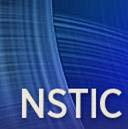
Guests: Jim Shiere – National Institute for Trusted Identities in Cyberspace (NSTIC)
The digitalization of the world economy has created demand for privacy enhancing identity solutions that support civil liberties and improve security. Running parallel to the need for trusted identities in cyberspace is the need for identities to be interoperable so that individuals can manage multiple credentials and choose which to use for a particular transaction or activity. The demand to establish a more secure identity ecosystem requires solutions to be user friendly and convenient including equitable access to the tools that establish this online identity credential for everyone, not only the affluent.
Learn more about NSTIC’s work to help advance the initiative of establishing a trusted identity in cyberspace, what implications this could have on patient identification in healthcare, why choosing a patient identification platform that is standardized is critical, and more!
Listen to this short clip from the podcast where Jim discusses the importance of biometric patient identification data standardization in the context of providing information that can easily be shared through health information exchanges:
Sample podcast audio clip:
Learn more about trusted identities in cyberspace by downloading the full version of the podcast which covers the following topics:
Interview Includes
- A background on who NSTIC is, their mission and objectives, and details on the goal of creating an “Identity Ecosystem.”
- What processes and structure are needed to meet the goals of NSTIC?
- Why is now the right time to establish a national strategy for trusted identities in cyberspace?
- How easy has it become for criminals to steal online identities? Is there a shared, societal cost of identity theft?
- How delicate is the balance between creating trusted online identities and the right to privacy and what safeguards are in place to protect it?
- The benefits and value of a standards-based trusted identity for patients in healthcare.
- How NSTIC is working with the ONC and private entities to advance the initiative of establishing a trusted identity for patients in healthcare.
- NIST has interoperable standards for iris, face, and fingerprint biometrics but other forms of biometrics don’t yet have a standard. Would NSTIC ever recommend for an organization that wants to implement an identity credentialing program to select a technology that does not have an interoperable standard? How could a non-standardized identity credential hinder an organization in the future?
- As the healthcare industry moves towards a more patient centric model and opens data access to patients through online portals and other tools, what impact could a trusted online identity have on reducing medical identity theft?
- What NSTIC is doing at Inova in their AAMVA pilot in terms of “what’s next” for patient security and privacy.

